First off, if you haven’t read part 1: READ IT HERE first. Now, on to Part 2!
We reached Timur and introduced ourselves to the two visiting NGO workers. “Ready to go in? Timur inquired. “Well, first I better tell Nia and Sarah what we’re doing,” Nick said. “I’ve kept it a surprise thus far.” At that point he turned to us for the big reveal, “For today’s mystery trip, we’re attending a fair highlighting the cultural traditions of ten nomadic peoples from the Eurasian Steppe—with one of those cultures being Kazakhstan.” Nia and I were stoked and eager to get on with it!
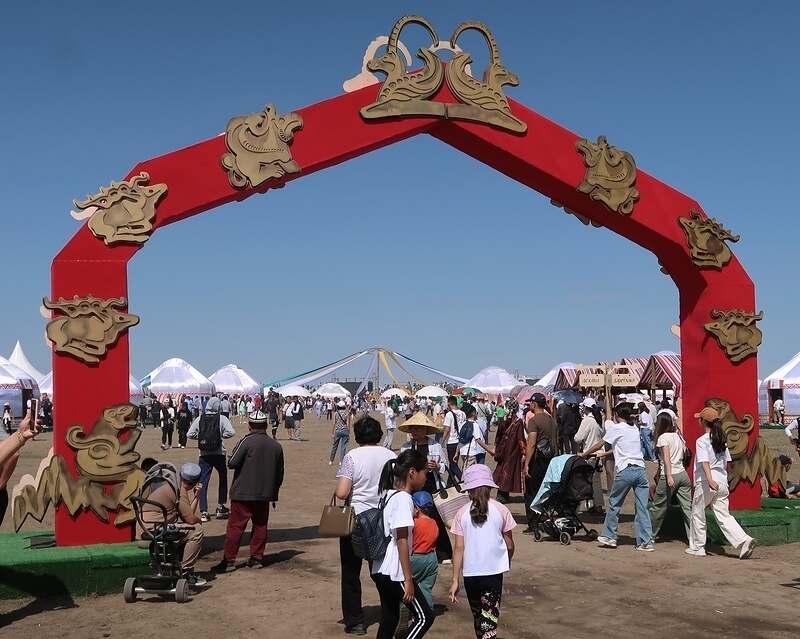
It was only 11:45 AM when we entered the fairgrounds, so things were still more or less calm. The festival was held on a big, flat plain—or a “steppe” as they call it here. In the middle of the fair was a large pole with turquoise, gold and white ribbons coming down from the center; very similar to what you might see on a May Day pole. Adjacent to the pole was an arena and stage where the performances would happen. Scattered across the fairground were several dozen yurts, though it was initially unclear to us what they housed. And I’d be remiss in not mentioning the animals—horses, dogs, camels and sheep—to name a few. There was no shortage of things to look at, that’s for sure.
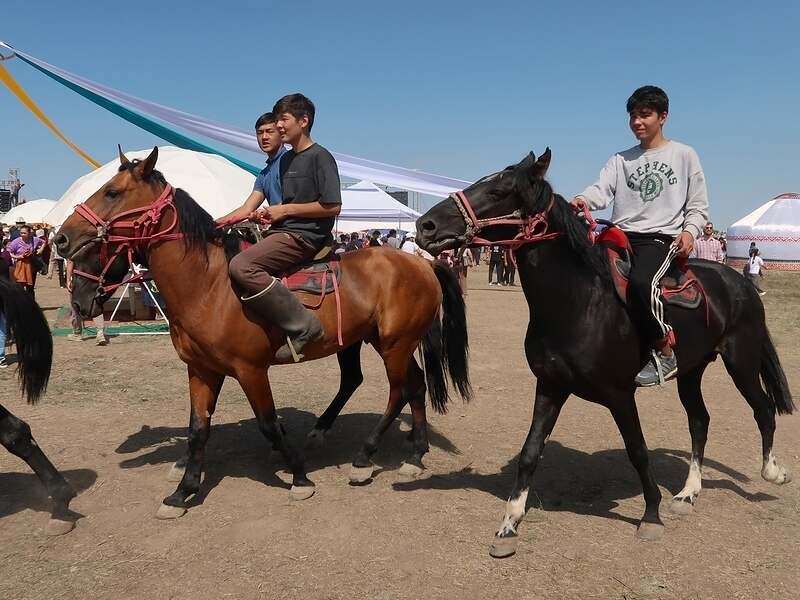
There was no map being given out, so we just wandered aimlessly until someone graciously beckoned us into their yurt. For those not familiar, a yurt is a portable, round tent that is covered (and insulated) by animal skins or felt. It is one of the oldest shelters in existence and holds up very well in extreme weather conditions. This is what made yurts the perfect dwellings for the nomads living on the Eurasian steppe.
Curious what parts made up the Eurasian steppe? Yeah, me too. Here’s a map I found:
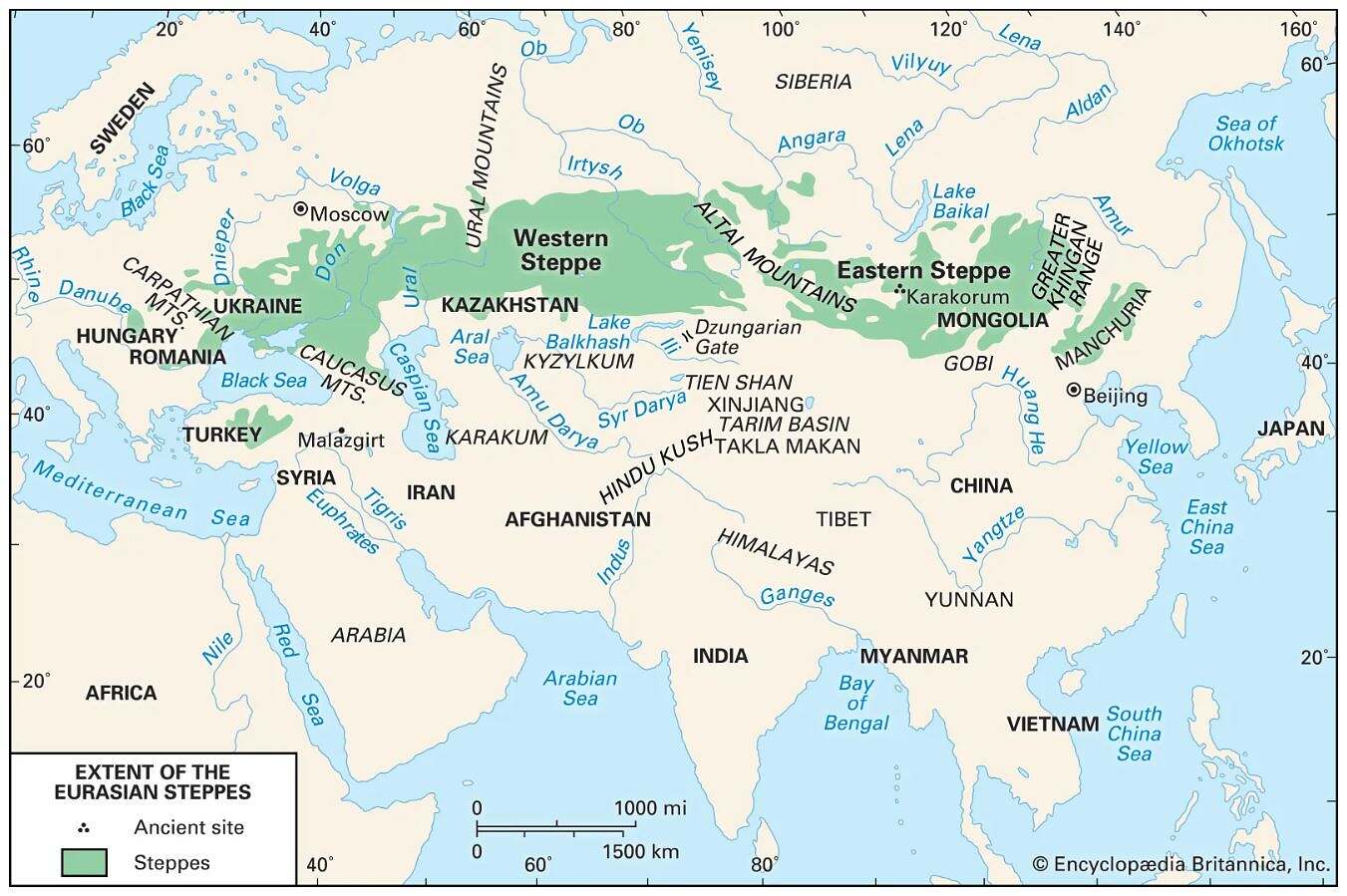
The yurt we were invited into was roughly 15 feet high and 20 feet wide. Every inch was covered in cloth and there was a large opening at the top. I was impressed by how spacious it felt. We took our time looking at the objects on display and the host encouraged us to try some of the Kazakh foods on the central table. We were happy to oblige and enjoyed some delicious meat pies and fried bread before heading out.
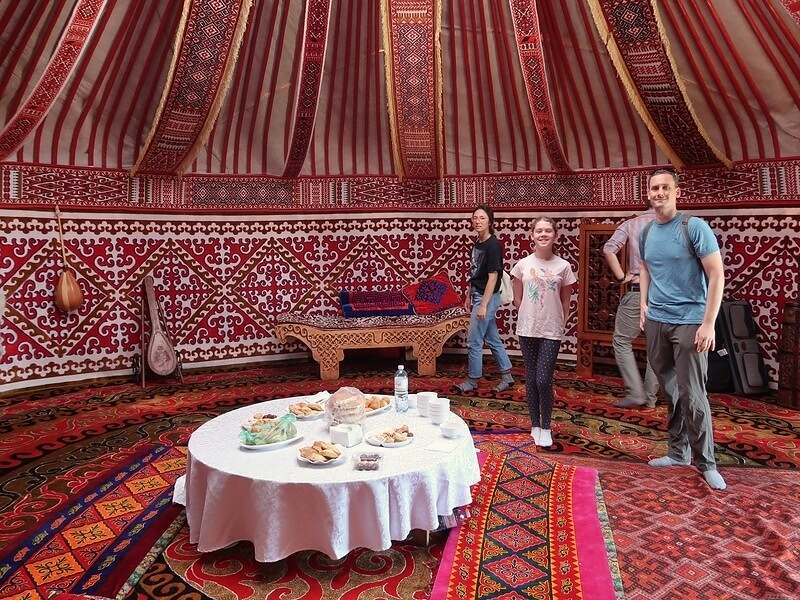
Later in the day we were invited into another yurt being hosted by the people of Karakalpak, which I learned is an autonomous republic in Uzbekistan. Their yurt had a very different feel and was filled with a massive food spread and a host of elders in traditional dress. Everyone seemed delighted to have us come in and immediately began plying us with food and beverage.
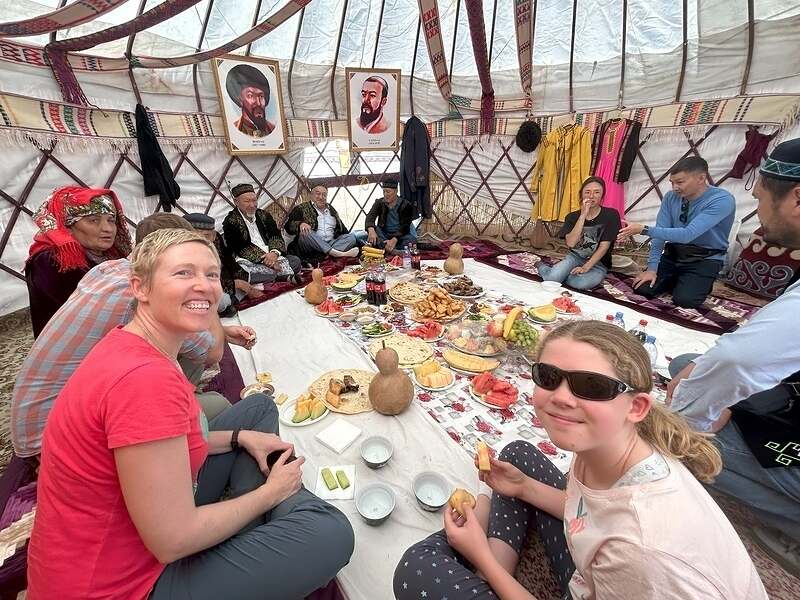
I was still quite confused about this whole “come-into-my-yurt” thing because not only was there no entry fee to the festival, but no one was asking for any money for the food we kept being given in these yurts. Very strange. Who was paying for all this??
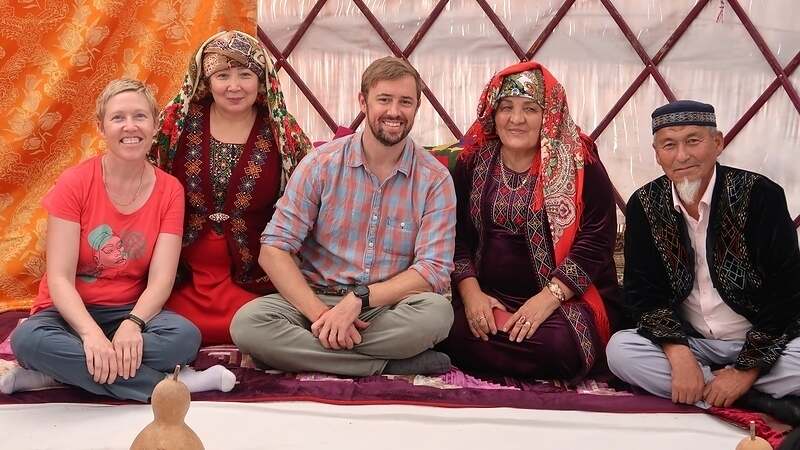
We then transitioned into several rounds of pictures before being ushered outside to watch the elders dance. It was all quite unexpected and delightful and I couldn’t wait to see what we came upon next! This post has gotten quite long again, and there’s still more to share, so for my third installment, I’m going to share an album on Facebook with narration about what we saw. Hope you’ve enjoyed this as much as we did!


